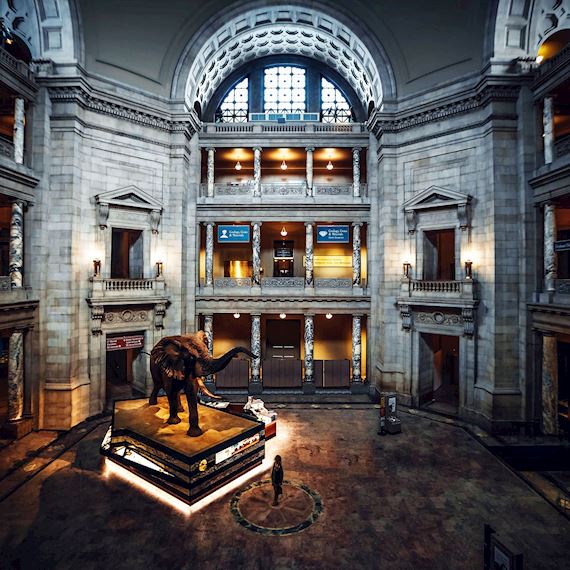When I was younger I always thought that the preservation of history was one of the most important duties to take on in order for people to learn and understand the world before we even existed. Today, I still believe it’s very important to preserve history whether it’s human history or even the natural history of the world. Curation, in my opinion, is one of the most important jobs and duties in the educational field. Collecting, preserving, and displaying artifacts not only help organize our history in a coherent manner; It helps others learn about history through a different lens of education outside of school. In this post, I’ll explain the reason why museums collect and examples of collections at certain museums.
Museums are dedicated to preserving and exhibiting objects of cultural and historical significance. The role of museums is to collect, conserve, and curate these objects for future generations to learn from and enjoy. The process of collecting and curating is a complex and multifaceted task that requires extensive knowledge and expertise.
The primary reason for museums to collect is to preserve history and culture. Museums preserve objects that have significance, whether it be for their historical, cultural, artistic, or scientific value. Collecting objects that represent a particular time or culture is a way to ensure that they are not lost or forgotten. For example, the British Museum in London has a vast collection of objects from around the world, including Egyptian mummies, ancient Greek sculptures, and medieval armor, to name a few. These objects tell the story of human history, and the museum’s collection helps preserve this history for future generations.
Another reason for museums to collect is to educate people. Objects collected by museums are often used to educate people on various topics. For example, the Natural History Museum in New York has a collection of dinosaur fossils, which are used to teach people about prehistoric life. Art museums collect works of art to educate people about the artists who created them and the time period in which they lived. The Museum of Modern Art in New York has a vast collection of modern and contemporary art, including works by Pablo Picasso, Salvador Dali, and Andy Warhol, among others. The museum’s collection is used to educate people about modern art and its influence on society.
Museums also collect and curate to promote research. Objects collected by museums are often studied and researched by scholars and experts in various fields. The Smithsonian Institution in Washington, DC, has a vast collection of objects, including historical artifacts, scientific specimens, and works of art. The museum’s collection is used by scholars and researchers to conduct research in various fields, from history to anthropology, and from biology to geology. The museum’s collection has contributed to the advancement of knowledge in these fields.
The process of curating a museum collection is just as important as collecting. Curators are responsible for managing the collection, selecting objects for display, and organizing exhibitions. Curators must have extensive knowledge and expertise in their field to select objects for display and interpret them for the public. Curators must also consider the context of the objects and their historical and cultural significance when organizing exhibitions.
In conclusion, museums collect and curate objects for preservation, education, and research purposes. The process of collecting and curating requires extensive knowledge and expertise, and curators must consider the context and historical significance of objects when organizing exhibitions. Museums play a vital role in preserving history and culture, and their collections are invaluable resources for scholars, researchers, and the public.
Question: If you could add any artifact or collection to a museum’s collection, regardless of cost or practicality, what would it be and why?

Hello Hannah! This is a great explanation of why museums collect. It’s important to understand and preserve human history through such collections as they can also serve as a reminder of the different cultures humans have created and lived. Collections, as you stated, are also amazing sources for educating the public about historical and cultural aspects. To answer your question, an artifact I would like to add to a museum’s collection would most likely be something relating to the ethnic Hmong community who’s physical history has been obscured through war and time.
Rather than a specific artifact or collection i would like to see in a specific museums hands, if cost and practicality were not an issue I as an anthropologist, would love to see America’s various indigenous groups to have access to their own museums or similar institutions where they could display, preserve and educate their populations about their cultural history in their own fashion without relying on modern western institutions.
I know it’s a stretch into creativity but I would totally submit myself as an archaeological artifact much like the artist, James Luna did with his “Artifact Piece” (1987/1990). It was an art piece in which he laid down in a mock archaeological excavation to symbolize the unethical/immoral studies of Indigenous people. I would do something similar to illustrate transgender bodies under public scrutiny and examination. Here’s a link to find out more about James Luna’s work since I can’t post a photo here in the comment section.
https://marabouatthemuseum.com/2019/01/31/james-luna-artifact-piece/